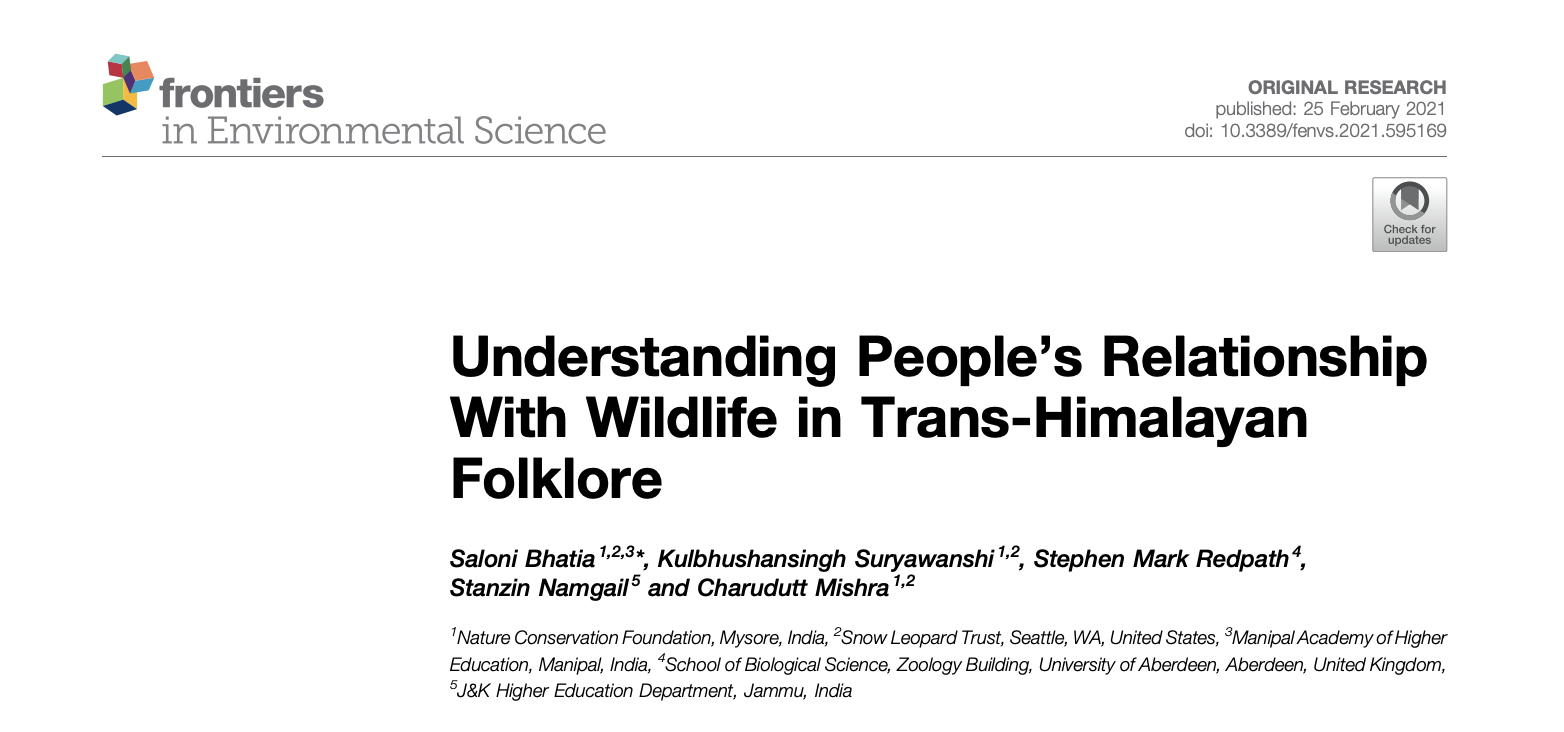Please find below, details of new articles, added to the bibliography:
Title: Identifying priority landscapes for conservation of snow leopards in Pakistan
Authors: Hameed, S., Din, J. U., Ali, H., Kabir, M., Younas, M., Rehman, E. U., Bari, F., Hao, W., Bischof, R., Nawaz, M. A.
Abstract: Pakistan’s total estimated snow leopard habitat is about 80,000 km2 of which about half is considered prime habitat. However, this preliminary demarcation was not always in close agreement with the actual distribution the discrepancy may be huge at the local and regional level. Recent technological developments like camera trapping and molecular genetics allow for collecting reliable presence records that could be used to construct realistic species distribution based on empirical data and advanced mathematical approaches like MaxEnt. The current study followed this approach to construct an accurate distribution of the species in Pakistan. Moreover, movement corridors, among different landscapes, were also identified through circuit theory. The probability of habitat suitability, generated from 98 presence points and 11 environmental variables, scored the snow leopard’s assumed range in Pakistan, from 0 to 0.97. A large portion of the known range represented low-quality habitat, including areas in lower Chitral, Swat, Astore, and Kashmir. Conversely, Khunjerab, Misgar, Chapursan, Qurumber, Broghil, and Central Karakoram represented high-quality habitats. Variables with higher contributions in the MaxEnt model were precipitation during the driest month (34%), annual mean temperature (19.5%), mean diurnal range of temperature (9.8%), annual precipitation (9.4%), and river density (9.2). The model was validated through receiver operating characteristic (ROC) plots and defined thresholds. The average test AUC in Maxent for the replicate runs was 0.933 while the value of AUC by ROC curve calculated at 0.15 threshold was 1.00. These validation tests suggested a good model fit and strong predictive power. The connectivity analysis revealed that the population in the Hindukush landscape appears to be more connected with the population in Afghani- stan as compared to other populations in Pakistan. Similarly, the Pamir-Karakoram population is better connected with China and Tajikistan, while the Himalayan population was connected with the population in India. Based on our findings we propose three model landscapes to be considered under the Global Snow Leopard Ecosystem Protection Program (GSLEP) agenda as regional priority areas, to safeguard the future of the snow leopard in Pakistan and the region. These landscapes fall within mountain ranges of the Himalaya, Hindu Kush and Karakoram-Pamir, respectively. We also identified gaps in the existing protected areas network and suggest new protected areas in Chitral and Gilgit-Baltistan to protect critical habitats of snow leopard in Pakistan.
URL
Title: Fast, flexible alternatives to regular grid designs for spatial capture–recapture.
Authors: Durbach, I., Borchers, D., Sutherland, C., Sharma, K.
Abstract: Spatial capture–recapture (SCR) methods use the location of detectors (camera traps, hair snares and live-capture traps) and the locations at which animals were detected (their spatial capture histories) to estimate animal density. Despite the often large expense and effort involved in placing detectors in a landscape, there has been relatively little work on how detectors should be located. A natural criterion is to place traps so as to maximize the precision of density estimators, but the lack of a closed-form expression for precision has made optimizing this criterion computationally demanding. 2. Recent results by Efford and Boulanger (2019) show that precision can be well approximated by a function of the expected number of detected individuals and expected number of recapture events, both of which can be evaluated at low computational cost. We use these results to develop a method for obtaining survey designs that optimize this approximate precision for SCR studies using count or binary proximity detectors, or multi-catch traps. 3. We show how the basic design protocol can be extended to incorporate spatially varying distributions of activity centres and animal detectability. We illustrate our approach by simulating from a camera trap study of snow leopards in Mongolia and comparing estimates from our designs to those generated by regular or optimized grid designs. Optimizing detector placement increased the number of detected individuals and recaptures, but this did not always lead to more precise density estimators due to less precise estimation of the effective sampling area. In most cases, the precision of density estimators was comparable to that obtained with grid designs, with improvement in some scenarios where approximate CV(¬D) < 20% and density varied spatially. 4. Designs generated using our approach are transparent and statistically grounded. They can be produced for survey regions of any shape, adapt to known information about animal density and detectability, and are potentially easier and less costly to implement. We recommend their use as good, flexible candidate designs for SCR surveys when reasonable knowledge of model parameters exists. We provide software for researchers to construct their own designs, in the form of updates to design functions in the r package oSCR.
URL


